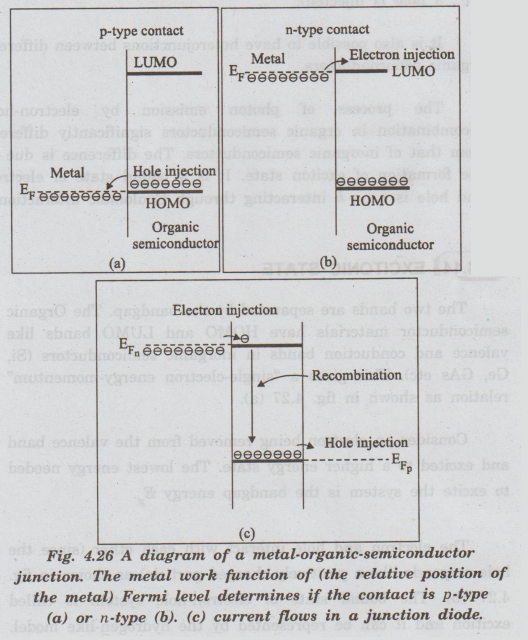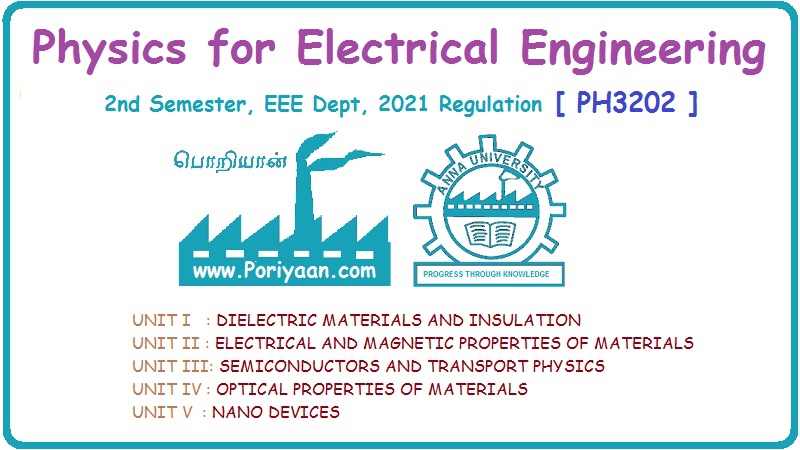Physics for Electrical Engineering: Unit IV: Optical Properties of Materials
Organic semiconductors: optical processes and devices
In the last 1980s the interest in organic semiconductors demonstrated by the invention of electroluminescent devices and FETs made from polythiophene.
ORGANIC SEMICONDUCTORS: OPTICAL PROCESSES AND DEVICES
In
the last 1980s the interest in organic semiconductors demonstrated by the
invention of electroluminescent devices and FETs made from polythiophene.
Polymer-based
devices are now used for back-lights of liquid crystal displays, displays of
devices, such as cell phones or watches. It is used in that commercial
technologies, such as televisions, solar cells, etc., will benefit from new
advances.
Polymer
LEDs were first demonstrated in 1990. They are very attractive because of
potential large area applications and mechanical flexibility.
The
organic diode is usually not fabricated by doping the polymer itself. Instead
an undoped polymer film is placed between an anode (indium tin oxide) and a
cathode (e.g., calcium).
In
organic semiconductors, the nature of atomic bonding results in very narrow
range energy levels.
Figure
4.26 shows a ardiagram of a metal-organic- semiconductor junction.
When
the Fermi energy of the metal is close to the HOMO level, electrons from the
this level can move into the metal (a hole is injected into semiconductor. Thus
in this case the metal acts as a p-type contact.

When
the metal work functions are close to the LUMO state, as shown in fig. 4.26 an
n-type contact results. The current. flow in a p-n diode using an organic
semiconductor film is shown in fig.(c).
Istom
Thus, the n-contact injects an electron, while diffuses into the semiconductor.
Then, eventually recombining with a hole in the HOMO level. The electron
finally leaves the HOMO state (i.e., a hole is injected).
It
is also possible to have heterojunctions between different organic semiconductors.
The
process of photon emission by electron-hole recombination in organic
semiconductors significantly different from that of inorganic semiconductors.
The difference is due to the formation of exciton state. It is a bound state of
electron and hole is a e-h interacting through Coulombic interaction.
Physics for Electrical Engineering: Unit IV: Optical Properties of Materials : Tag: : - Organic semiconductors: optical processes and devices
Related Topics
Related Subjects
Physics for Electrical Engineering
PH3202 2nd Semester 2021 Regulation | 2nd Semester EEE Dept 2021 Regulation
